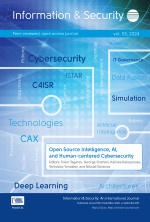Telemedical Services for Disaster Emergencies
Source:
Information & Security: An International Journal,Keywords:
Disaster Scenario, Live Teleconsultation, Real-Time Interactive Telemedical Services, Satellite-Based Telecommunication SystemsAbstract:
The DELTASS (Disaster Emergency Logistic Telemedicine Advanced Satellites System) project aims at providing logistic and telemedical services for disaster emergencies. Satellite-based systems are well-suited for these scenarios where typically the ground infrastructure has been destroyed. OP 2000 has designed and validated various satellite-based telemedical services for the support of the medical staff of a mobile field hospital (MFH), within the disaster area, by medical experts from a designated Reference Hospital (RH), outside of the disaster area. The MFH provides all activities related to coordination of the mobile teams at the disaster site, the victim’s medical triage, reception, first aid, conditioning for transportation, further medical expertise by teleconsultations between the MFH and the RH. The RH acts as an expert center by providing telemedical services to the MFH. These services consist of off-line and on-line telediagnosis, access to external medical databases, as well as real-time interactive telemedical services such as live teleconsultations, live telesonography, intra-operative virtual reality simulations, and interactive telemicrobiology. One of the objectives of providing live second opinion by remote experts is to reduce the number of unneeded amputations, manipulations and subsequent complications substantially by expert support during triage, diagnosis and medical treatment. These interactive telemedical services between the MFH and the RH use the dedicated workstation WoTeSa (“Workstation for Telemedical Applications via Satellite”) with the high-end interactive communication software WinVicos (“Wavelet-based Interactive Video Communication System”) and combine high quality live video transmission at a satellite bandwidth of up to 2 Mbit/s with remote control of medical equipment.
